Preserving and protecting the environment and promoting resource efficiency.
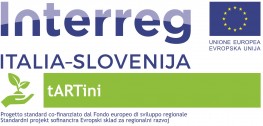
Protecting and promoting natural and cultural resources
The project “tARTini” preserved, developed and promoted the cultural heritage of Giuseppe Tartini. Its general objective was to provide global accessibility to his artistic, didactic, philosophic and scientific legacy, mostly scattered until now, and to match it with the territorial marketing of a touristic path along the places of his life as a booster for a growing inflow of visitors in the transboundary area between Piran/Pirano in Slovenia and Padua in Italy.
As it was for his visitors at the time of the Grand Tour, today Giuseppe Tartini is upholding once again the attractiveness of his charm as an added value and integration for cultural tourism in the North Adriatic sea region. His heritage is now available to the whole world thanks to the global access to the multilingual website Discover Tartini ( www.discovertartini.eu ), where you can find an archive of his music and theoretical writings; the territorial biographical guide to the musical touristic path of The Tartini Route; and youngsters interacting with his music and artistry in the section Tartini Junior.
This is the outcome of the project named tARTini (Turismo culturale all’insegna di Giuseppe Tartini - Kulturni turizem v znamenju Giuseppeja Tartinija), funded by the European Union through the cross-border programme INTERREG VA Italy – Slovenija 2014 – 2020, implemented by a partnership of cultural bodies and public institutions, where the Municipality of Piran/Pirano acted as the Lead and cooperated with the Community of Italians of Pirano, the Ljubljana Festival, the Music Conservatory Giuseppe Tartini of Trieste, the CEI-Executive Secretariat (CEI ES), and the Department for Linguistic and Literacy Studies of the University of Padua.
Giuseppe Tartini (Piran 1692 – Padua 1770) was a charming and eclectic personality: he was the first and most renowned violinist in the Europe of his time; he is considered among the main composers in the history of world music; and was a great teacher with his forward-looking vision of a training programme addressed to students from all over Europe. Nonetheless, he was also a scientist and a technician: he is the author of important treaties on harmony and music theory, including the “third sound”, still a subject of sound physics research. He is also linked to the shape of the new fiddlestick, which has changed violin performances forever.
Discover Tartini is a structural change with regard to the relationship between Tartini and his fans worldwide: by reassessing the innovative nature of his work to restore his role as a great player of the Enlightenment in Europe when he was alive; by supplying scholars and interpreters with a digital archive of his musical and theoretical work, and of his known epistolary, that will enable new executions and tartinian studies thanks to the opportunities provided by information technology; by setting the path of the locations of his life between Piran and Padua in the realm of natural and human masterpieces, that enshrine them in this part of Europe.
The results of the project change the visibility of Tartini’s work worldwide.
“Discover Tartini” is the brand of the new physical and virtual itinerary, that supplies to scholars, followers and tourists a free access to the musical, narrative and museal estate made available by the action.
Lead Partner
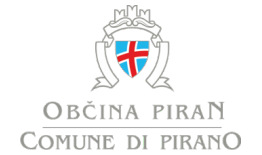
Project partner 1

Project partner 2
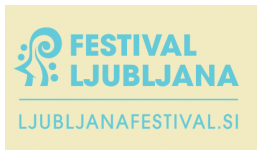
Project partner 3
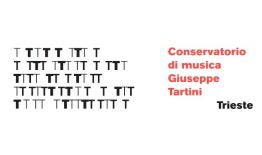
Project partner 4
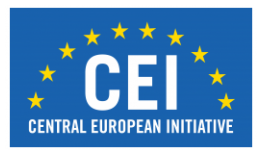
Project partner 5
| Poster evento annuale 30/05/2018 TARTINI_ITA.pdf ( 538 bytes, published on 11 June, 2018 - 17:09 ) | |
| tARTini - D3_2_4 Policy Guidelines FINAL - Italian version.pdf ( 1 byte, published on 10 May, 2021 - 14:41 ) | |
| tARTini - D3_2_4 Policy Guidelines FINAL - Slovene version_fotofinal.pdf ( 1 byte, published on 10 May, 2021 - 14:41 ) | |
| Association Agreement Discover Tartini - Signed.pdf ( 1 byte, published on 19 April, 2022 - 12:02 ) |
MAIN GOALS OF THE PROJECT
The cultural tourism project “tARTini” aimed to the goal of preserving, upholding, searching, enhancing and promoting the cultural heritage of Giuseppe Tartini, composer and violinist born in Pirano in the year 1692, who in the age of Enlightment was also a scientist, technician and trainer of European relevance and fame.
The general objective was achieved through the implementation of the following specific objectives:
CURRENT ACHIEVEMENTS OF THE PROJECT IMPLEMENTATION
The “tARTini” project after three extensions was finalized on 31 August 2020.
Notwithstanding the cancellation of the events’ programme organized for the 250th anniversary of the death of the Master of Nations (as Tartini was named) at end February 2020, due to the outbreak of the epidemics of COVID 19, the main activities were successfully implemented.*
In particular: the study visit for specialized journalists organized by end January 2020 prompted a true media campaign on the figure of Giuseppe Tartini and the results of the project at national scale in Italy and Slovenija; an Association Agreement was signed by the Partners as a reciprocal pledge to guarantee the sustainability and the enhancement of the achieved outcomes
the policy guidelines for a stronger commitment to protect and make the most of the cultural heritage of Giuseppe Tartini and to take full advantage of the values of his work in the tourism economy of the cross-border region (see “Project documents” in the menu).
As it happened over the deployment of the project activities, the synergy provided by all Partners with their current operations substantially multiplied the visibility of the outputs.
The new accessibility of the tartinian heritage fed international scientific conferences, that took place in Trieste in September 2019 as a project event, and later in Padua and in Ljubljana in October and November 2020 respectively.
The liveliness of the Facebook page Discover Tartini with posts sometimes achieving up to twenty thousand contacts witnesses the further potential of the promotion of the results in the long run whereas the continuity of the website is currently guaranteed by the partnership on a voluntary base. ( www.facebook.com/DiscoverTartini )
Note * - Project’s implemented activities
According with the Programme’s guidelines the architecture of the activities aiming to achieve the objectives of the project foresaw a WP Management, a WP Communication, two WPs for the implementation of the content specific actions (WP 3.1 was focused on recovery and accessibility of the cultural heritage of Tartini and WP 3.2 on the tourism promotion of Discover Tartini brand) and a WP 4 for the investments at Casa Tartini in Piran.
The WP Communication was the playground for wrapping-up the proceedings of the project’s outputs that are addressed to the public and their web promotion. The Communication Strategy of the project allowed to integrate the scientific activities and the cultural productions with the drafting of the tourism brand Discover Tartini. Thus, the role of all partners in the organization of events (musical, educational, conferences, exhibitions) was highlighted also beyond of the programme area since the target of the project at large proved to be really of global relevance.
Named “Giuseppe Tartini and his work“, the WP 3.1 performed research, new encoding and digitalization of the theoretical and musical production of Tartini and of the biographic sources, including his large epistolary actually spread along with innumerous locations in and outside Europe. In more detail, Activities 1 e 2 in this WP addressed the needed investigations, studies and editing, digital and in printing, of Tartini’s letters; Activity 3 created the sound archive of his music, where the 2019 cycle of six concerts performed in the Festival “The sound of Tartini” is included; Activity 4 provided digitalization and uploading of the archive in the site Discover Tartini,; the same was done with Activity 5 for biographic sources, theoretical and technical writings and musical printings and manuscripts.
Activity 6 allowed also to organize the international conference, held in Trieste in September 2019. Its proceedings are going to be issued by Conservatorio Giuseppe Tartini of Trieste with own resources. Experts of the Conservatory mainly cared also editing narratives and explanations for the site Discover Tartini (Activity 7).
“Giuseppe Tartini as a new transboundary resort of cultural tourism” it is the denomination of WP 3.2 In this framework the new brand Discover Tartini was drafted (Activity 9) together with its policy guidelines (Activity 4). Additionally, several promotional events and concerts where organized both in Piran and in Ljubljana.
Activity 1 was for the identification, elaboration and publication of the multilevel path called Tartini Route. This output of the project benefited also of the lessons learned by the partners along the study visit to Salzburg, the town of Mozart, in January 2018
(Activity 2 - www.ita-slo.eu/en/all-news/study-visit-salzburg )
Tied with the investments for the extraordinary refitting of Casa Tartini (Tartini’s House) in Piran foreseen by WP 4, the reshaping and new set-up of the multi-media internal exhibition were also finalized (Activity 3 e 11).
A brief shooting at www.youtube.com/watch?v=hBSIrTk3TgE illustrates the done work.
With Activity 4 it was designed the Cross-border Development Plan for the promotion and the preservation of the Tartinian Heritage in the long term; in the final stage of the project drafting the Plan capitalized also of the multifaceted experience realized with Activities 5 – 6 – 8 – 10 of this WP, that included educational workshops, cultural events for children and youth, the participation in a scientific meeting in Vienna and in the fall of 2019 staging Discover Tartini in two major international fairs for the tourism sector in London and in Ljubljana.
Other information is in the newsletters available at the section Documents of this site
( www.ita-slo.eu/it/tartini?page=1 ).
In view of the official establishment of the “Tartini Cross-border Network” foreseen by Activity 7, that was hurdled by the pandemic, in May 2020 the project partners undersigned an Association Agreement, also issued in the section Documents: here the partners pledge to forthcoming collaboration and to broader inclusion of relevant bodies and sponsors.